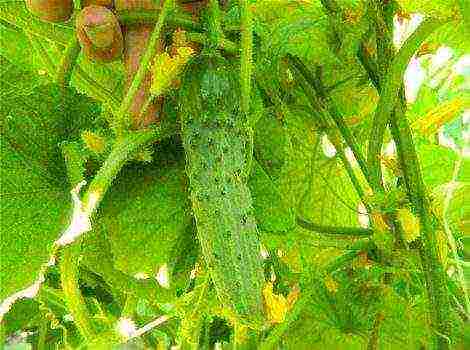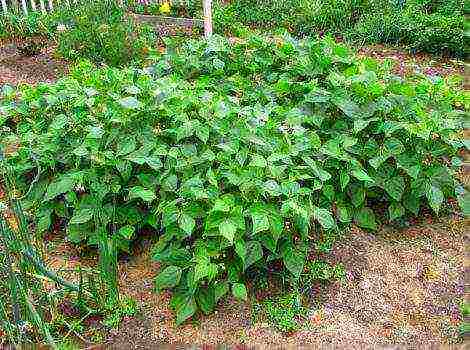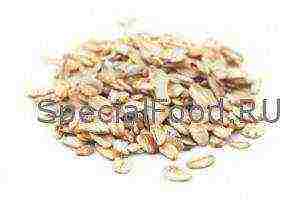Content [show]
In our country, white cabbage is traditionally popular. This popularity is explained by the peculiarities of the national cuisine, which includes various pickles, marinades, sauerkraut, borscht, pies with cabbage filling, etc. That is why any self-respecting summer resident must plant cabbage first of all on his site.
But among the variety of cabbage varieties on the modern market, it is not surprising to get confused: there are ordinary varieties, and hybrid, and domestic, and foreign, and late fruitful, and early tender, but less fertile. Our article will help you make your choice - we will tell you about Dutch varieties of white cabbage - after all, as you know, the Dutch are very successful in breeding science.
Overview of varieties
So, let's consider the most popular and productive varieties of Dutch selection. Let us add that all the varieties discussed below have already been adapted and tested in the Russian climate, so you can safely purchase and plant them.
Early
Early ripening cabbage usually does not differ in special yielding qualities, and, in addition, most of its types are absolutely not suitable for processing: pickling, salting, pickling. The fact is that early varieties have very delicate leaves that do not have spicy crunchy properties and density.
Early cabbages are usually fairly loose and often prone to cracking. However, these minor disadvantages do not stop real gardeners from growing early species, as it is a wonderful source of vitamins and nutrients. And here you can find out about the description of Tobia cabbage.
Bingo
It has one of the longest shelf life - it can be up to nine months. A round, regular head of cabbage reaches a mass of 1.5 to 1.7 kg. Gives stable yields, and in this case the heads of cabbage are not prone to cracking
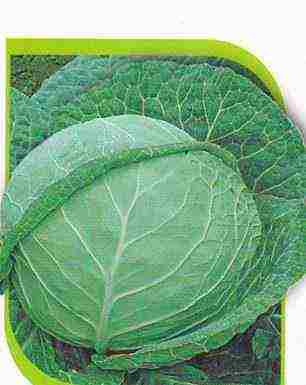
Dutch bingo cabbage
Musketeer
One of the earliest varieties of cabbage: heads of cabbage ripen 55 days after the seeds have taken root. Heads of cabbage are small in size and weight (0.8-1.3 kg), but they are not prone to cracking. It will also be useful to learn about what the Aggressor cabbage variety looks like.
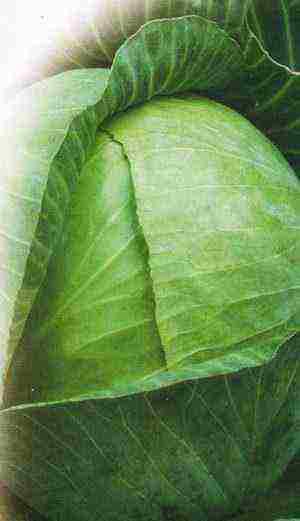
Musketeer
Python
Refers to medium early, intended for processing and fermentation. The heads of cabbage are resistant to fusarium and have a good density. The variety needs timely harvesting.
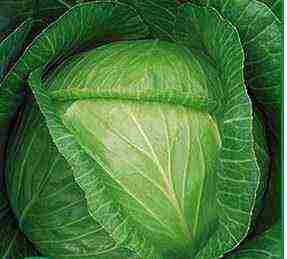
Python
Resistor
Also one of the very early varieties - the Resistor cabbage ripens in 55 days. A head of cabbage reaches a mass of 0.8 to 1.2 kg. It is immune to fusarium wilting, and it tolerates high temperatures well.
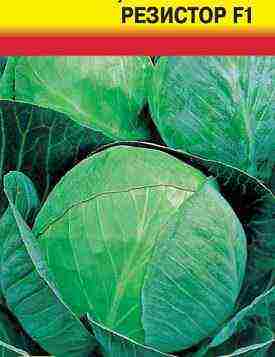
Resistor
Mid-season varieties
These representatives of the cabbage family are a transitional stage between early maturing and late species. The species included in this category have a universal purpose: they are suitable both for processing and for fresh consumption. The leaves in this case are denser than those of the early varieties.
What early white cabbage looks like, this information will help to understand.
But what the varieties of Peking cabbage look like, and what they are, is indicated here.
That
It will also be useful to find out which variety of cabbage is the best for pickling and storing.
Languadeaker
Differs in high yielding qualities, well suited both for fresh consumption and for processing. Heads of cabbage are of medium density and excellent taste. Cabbage keeps well. But what Lennox cabbage looks like, and what features of its cultivation, this information will help to understand.
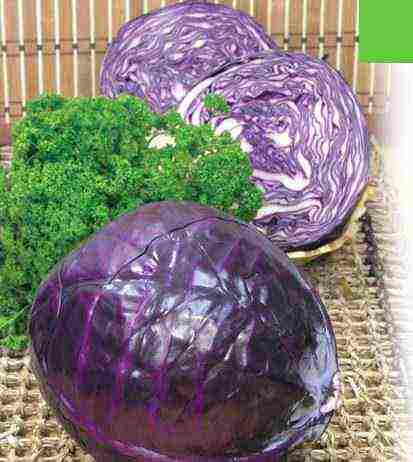
Languadeaker
Krautkizer F1
This hybrid is a great option for salad use. Heads of cabbage in this case are very dense, have a regular rounded shape. Good for use and fermented. The species is resistant to cabbage diseases, has high commercial characteristics, and has a high yield.
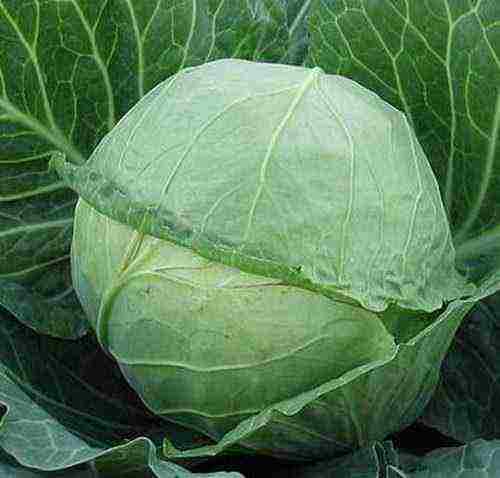
Krautkizer F1
Rinda F1
In this case, cabbage heads are round in shape and grow very large - up to six kilograms. What is very important, even with such a significant mass, the heads of cabbage do not crack.
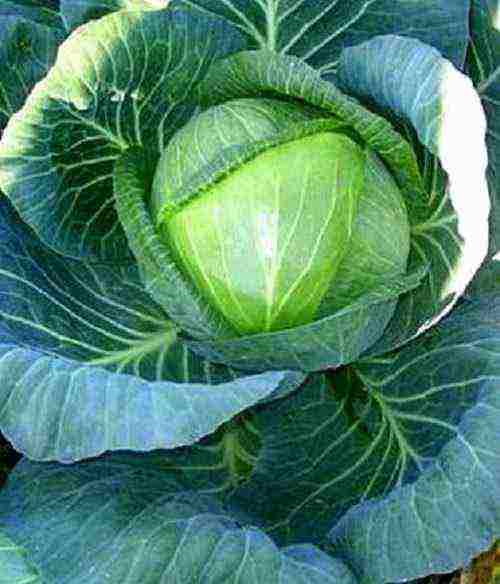
Rinda F1
The taste of cabbage is very good, can be used in any form, universal. On top of that, Rinda is also kept remarkably well.
Donar F1
This cabbage belongs to the medium-late varieties and is intended for long-term storage. So, under favorable external conditions, Donar cabbage can be stored for eight months, and without losing its taste. Heads of cabbage in this case are dense and have a universal purpose.
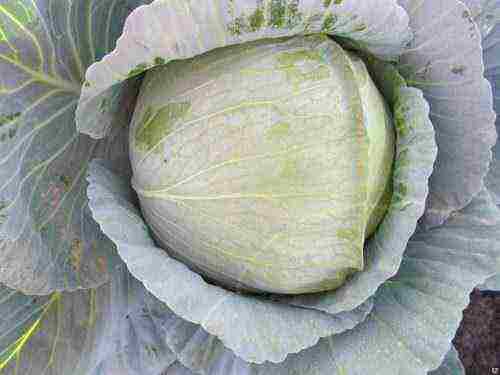
Donar F1
Late varieties
These cabbage species are the tastiest and most delicious. In addition, late-ripening varieties are also the most productive of all. The wait for the result, of course, takes a long time, however, it deserves it.
Late cabbage has the highest commercial characteristics and can be stored until the next harvest. The most delicious preparations are also obtained precisely from late-ripening species.
Bartolo F1
Among the representatives of the Dutch selection in Russia, one of the most popular. The head of cabbage in this case has a slightly elongated shape, reaching a mass of 3 kg. The fruits are very dense, they can be stored all winter without problems.
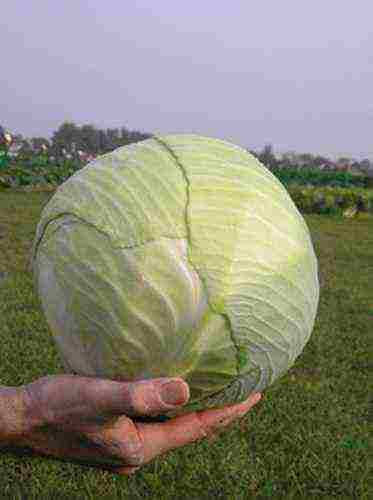
Bartolo F1
Portula F1
This hybrid cabbage species gives very large heads of cabbage (up to 6 kg), characterized by a high density. Thanks to this density, cabbage is well stored for a long time. The purpose of the variety is universal: heads of cabbage are suitable both for fresh consumption and for salting.
Fundaxi
It is a medium late high yielding Dutch hybrid. Resistant to fusarium wilt, which is its great advantage. Heads of cabbage are dense, weighing from 4 to 6 kg. Designed for open ground, and has a universal purpose.
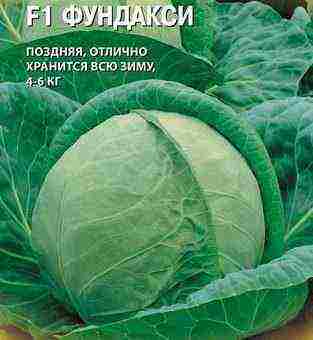
Fundaxi
Galaxy
This is a late species with a ripening period of 130-135 days. Designed for open field cultivation. Heads of cabbage in this case ripen in weight from 2.5 to 4.5 kg. The harvest of Galaxy cabbage is distinguished by good keeping quality, the fruits are not prone to cracking.
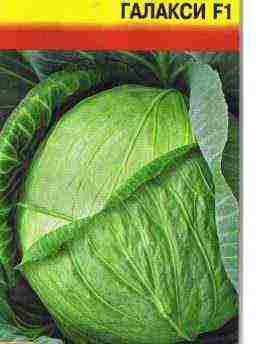
Galaxy
All this makes this species very suitable for industrial cultivation. Fresh Galaxy is very good, but also suitable for salting.
Roxy
Among the white-headed species, their red-headed "brother" has also cropped up. The variety is included in the State Register, which indicates its high quality properties. The mass of a head of cabbage in this case reaches, on average, 4.2 kg. The variety has universal application.
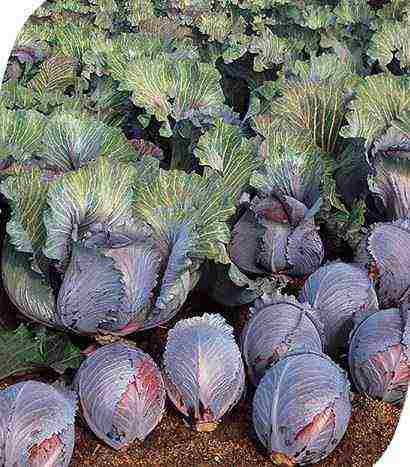
Roxy
Furios
Very high yielding. Has a universal purpose: heads of cabbage are suitable for processing, conservation, salting, and are good fresh. It is resistant to fusarium. Heads of cabbage are dense, reaching a mass of 3 to 5 kg.
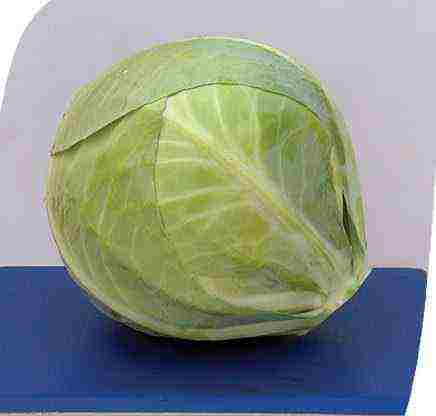
Furios
Ammon
This is a mid-late type of cabbage, has a wonderful taste and good marketability. Ammon is resistant to diseases, tolerates growing at high temperatures. A feature of the species is the increased content of vitamin C in the heads of cabbage.
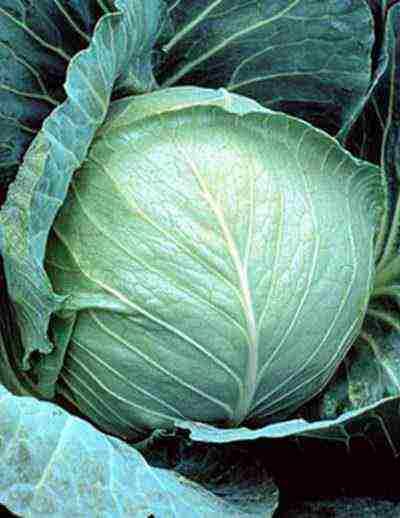
Ammon
In addition to all of the above, Ammon cabbage also has an extremely high yield.
Arrivist
High-yielding late-ripening hybrid. Has a universal purpose, resistant to fusarium and other diseases of the species. Heads of cabbage in this case are dense, reaching a mass of two to five kilograms.
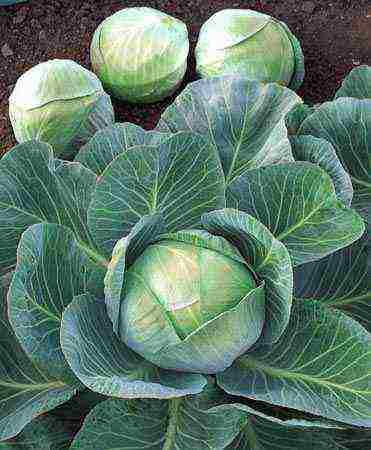
Arrivist
Amtrak
This late species has an amazingly long shelf life: heads of cabbage can lie for more than eight months without rotting or spoilage. This circumstance makes the species very attractive for industrial cultivation.
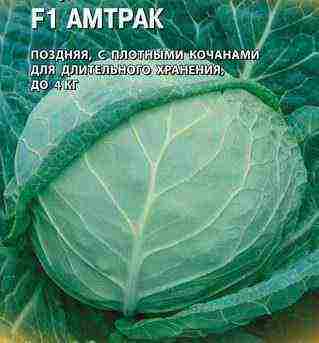
Amtrak
Heads of cabbage have a small weight - from 1.7 to 2.2 kg, but, as marketing research shows, such small sizes of cabbage are the most attractive for buyers. Provides stable yields, resistant to fusarium and cracking. You may also be interested in reading the gardeners' reviews about the Transfer cabbage, and understand whether it is worth planting it in your beds, or not.
So, we have considered the most famous varieties of Dutch cabbage on the Russian market. As you can see, the list is quite extensive, and allows you to choose from many wonderful varieties with different quality characteristics. Without a doubt, among the varieties presented there is one that will suit your needs in the best possible way.
Take note of this selection of 8 Dutch cabbage hybrids that won't disappoint.
Dutch cabbage is famous for its productivity, undemanding care, resistance to adverse weather conditions, diseases and pests. We have compiled a selection of 8 proven Dutch breeding hybrids.
Bronco F1
Bronco F1 is a good mid-season cabbage hybrid of Dutch selection, tested by both professional farmers and amateur gardeners.
The heads of cabbage of this cabbage are round, large, dense, have an excellent taste - they are suitable for fresh consumption, and for pickling, and for pickling.
The heads retain their good appearance even in heat and with a lack of moisture, they are well stored after harvest.
In addition, the plants of this hybrid are unpretentious and resistant to all kinds of "ailments", especially to bacteriosis.
| Productivity (kg per 1 sq.m.) | Head of cabbage weight (kg) | Maturation (days) | Storage |
| 7-8 | 3-4 | 80 | Long-term |
F1 Cabton
Cabbage Cabton F1 is popular with summer residents due to its high yield, resistance to fusarium, and the ability to grow well even in hot, dry summers.
Heads of cabbage are large, dense, ideal for fermentation. The only "but" - this cabbage is not suitable for long-term storage in winter.
| Productivity (kg per 1 sq.m.) | Head mass (kg) | Maturation (days) | Storage |
| 7-8 | 2-4 | 125 | Short term |
Mehndi F1
The main trump card of this hybrid of white cabbage is a very long storage, up to six months. In addition, F1 Mehndi cabbage is famous for its beautiful, juicy, versatile heads of cabbage.
This cabbage is not afraid of thrips and lack of moisture - a real find for a summer resident who does not have the opportunity to take care of cabbage beds for a long time!
| Productivity (kg per 1 sq.m.) | Head mass (kg) | Maturation (days) | Storage |
| 7-8 | 2,5-5 | 120-140 | Long lasting |
Parel F1
Parel F1 is a hybrid of ultra-early maturation. This cabbage is guaranteed to give a good harvest of juicy, tasty heads of cabbage. It is so unpretentious that after full maturation it will calmly "survive" in the garden for up to 10 days without cracking.
Another advantage of this cabbage is that the crop can be harvested as early as two months after planting the seedlings.
Heads of cabbage cannot be called champions in weight, but they are of high quality, tasty, dense. In addition, the small size is compensated by a good yield.
| Productivity (kg per 1 sq.m.) | Head of cabbage weight (kg) | Maturation (days) | Storage |
| 5-6 | 2 | 60 | Short term |
Rinda F1
Rinda F1 is a medium-ripening Dutch hybrid. This cabbage is a real "universal soldier": it is suitable for consumption directly from the garden, and for pickling and pickling, and for storage up to 4 months.
Her heads of cabbage are beautiful, round, with a juicy middle and a small stump.
Rinda F1 cabbage in the open field in the middle lane gives an excellent harvest.
| Productivity (kg per 1 sq.m) | Head mass (kg) | Maturation (days) | Storage |
| 7-8 | 3-7 | 75-80 | Short |
Satellite F1
Cabbage Satelit F1 is a medium late hybrid. It is not stored for long, up to 2-3 months, but it is beautiful fresh and processed (salting and pickling). Her heads of cabbage are strong, large, tasty.
Of the obvious advantages of the hybrid - excellent marketability and productivity, resistance to fusarium. In addition, the plant is capable of producing a large yield even in the most constrained circumstances - with thickened plantings.
| Productivity (kg per 1 sq.m) | Head mass (kg) | Maturation (days) | Storage |
| 7-8 | 3-8 | 110 | Short |
Taranko F1
Taranko F1 is a hybrid of Peking cabbage of Dutch selection. This "Peking" is distinguished by its delicate taste, juicy leaves, dense and large head of cabbage weighing up to 2 kg, which is quite good for this type of cabbage.
Remarkable taste and high yield compensate for a small drawback of this cabbage - short-term (on average up to 2 months) storage.
| Productivity (kg per 1 sq.m) | Head mass (kg) | Maturation (days) | Storage |
| 3-4 | 1,2-2 | 70-80 | Short |
Transam F1
White cabbage Tranzam F1 is an excellent example of an unpretentious, fruitful hybrid.
This Dutch cabbage will give you firm heads of cabbage weighing about 5 kg with a good taste, which are suitable for fresh consumption, pickling, pickling and winter storage (up to 6 months).
She doesn't care about heat or drought. She is not afraid of thrips and fusarium. This is a great option for beginners who have just decided to get their own garden, but are not quite confident in their abilities.
| Productivity (kg per 1 sq.m.) | Head mass (kg) | Maturation (days) | Storage |
| 5-6,5 | Up to 5 kg | 120-150 | Long lasting |
We also suggest paying attention to other collections of varieties and hybrids of cabbage from:
-
Top 9 best varieties of cabbage for pickling
Keep a list of hybrids and varieties of cabbage that you can ferment.
-
The most productive varieties of early cabbage
Early cabbage is good because it grows in almost 3 months. And if you choose the right varieties, then you are guaranteed a huge harvest.
-
The best varieties and hybrids of late cabbage for winter storage and pickling
Can cabbage be stored for six months and still be edible? After reading the article, you will not need to worry about it.
Dutch cabbage is one of the most popular agricultural crops in Russia. It grows both in a greenhouse and in open soil. The only feature of all plant varieties is that the culture requires a lot of light for proper growth and development. However, lighting is easy to provide in open spaces as well.
Breeders have developed many varieties of Dutch cabbage adapted for Russia. Below are the main varieties of this crop - the most popular, large and tasty - as well as the advantages and disadvantages of the plant.
General description of Dutch cabbage
Cabbage is a crop that is grown on farm estates for sale to chain stores, restaurants, food chains. Less commonly, cabbage is used for the production of animal feed. Fruits on average reach from 900 to 1500 g, the yield from one square. m high. Cabbage is cheap to maintain and easy to sell, which makes it so popular with agricultural companies.
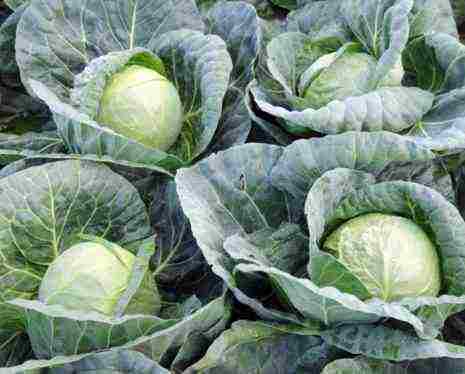
For cultivation in various conditions, varieties have been created for early ripening, mid-ripening, foreign and domestic. The variety of species of Dutch cabbage is described below.
The most popular varieties of Dutch cabbage
Dutch cabbage is classified according to several factors.
The most common classification of varieties is by breeding method:
- hybrid varieties (obtained by crossing existing ones);
- original.
Hybrid varieties generally cannot produce viable seeds.It is necessary to constantly purchase them from various companies. But hybrid crops are resistant to disease, not afraid of frost.
Interesting. Recently, all agricultural enterprises are switching to hybrids, and old varieties are becoming unclaimed.
Another classification is based on the place of selection:
- domestic;
- foreign.
It is better to choose cabbage bred in Russia. Russian varieties correspond to the climatic conditions of the country, they grow easily outdoors even in cold summers.
The most convenient classification, which has long been used by farmers, is according to the period of crop maturation. Cabbage is divided into the following types:
- early;
- mid-season;
- late.
There are also plants that bear fruit for a long time or produce a crop in winter. It is necessary to choose the type of variety according to the ripening period, based on climatic conditions. For the southern part of Russia, early maturing species are suitable, for the northern - late ones.
It is almost impossible to distinguish Dutch cabbage from a photo: early, middle and late species are varied in color, there is no pattern between appearance and ripening rate.
Early types of cabbage
The most popular early dutch cabbage varieties are Bingo and Musketeer.
These varieties are popular for their long shelf life.
Bingo heads of cabbage can lay up to 9 months after harvest. At the same time, cracks do not appear on the surface of the leaves, spoiling the presentation and taste. "Bingo" is notable for its large weight: up to 1.7 kg. Hurricane cabbage is also stored for a long time, up to 8 months.
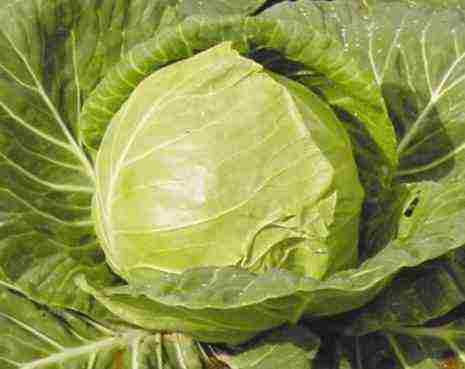
"Musketeer" is a medium-sized variety. It reaches a maximum of 1.3 kg. But it has an attractive presentation (round light heads of cabbage) and also does not crack. This is almost the earliest variety: the crop can be harvested 55 days after planting the seeds.
Only the cabbage Mirror f1 with a maturation period of 45 days and the cabbage "Kevin" f1 (48 days) are ahead of him.
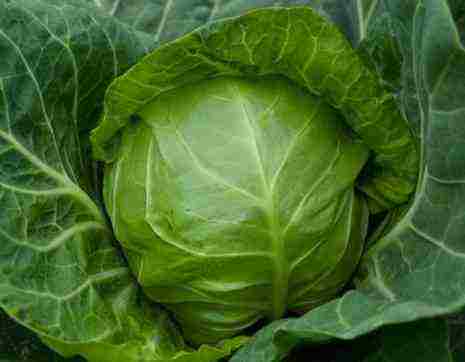
Sometimes these species are ranked as early maturing, and not early.
O
Brother attention. Early ripening varieties yield quickly with careful care. With a lack of it, the fruits may be too small.
Farao f1 cabbage has recently entered the market. White-headed variety, early. More about Farao cabbage (variety description):
- ripening period 65 days;
- fruit weight 3-4 kg;
- dense planting of plants is allowed.

Another hybrid is Parel cabbage. Cabbage "Parel" f1 was bred in 1993 and can be grown in 10 regions of Russia, mainly in the east and north. Characteristics of Parel cabbage (description):
- vegetative period 55-60 days;
- heads of cabbage on average up to 1.5 kg, the maximum can be reached 2 kg;
- uniform color, light;
- heads of cabbage slightly elongated;
- intended for fresh consumption.
About Parel f1 cabbage, the reviews are extremely positive: the variety grows easily in difficult conditions, grows well even with dense planting.
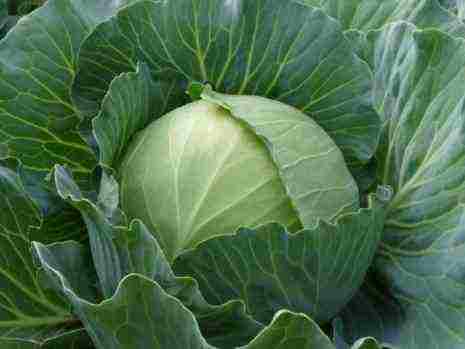
It is worth paying attention to the cabbage "Tiara" f1. It is distinguished by a very bright color and round shape of heads. They can be stored in the field for up to 10 days even after ripening. Tiara f1 cabbage has a ripening period of 53-56 days.
Mid-season varieties
Among the varieties with an average ripening rate, the most popular are Langedeiker and Krautkaiser f1. The f1 mark is typical for all hybrid varieties.
You may be interested in:
Languadeaker produces traditional, medium-bodied heads of cabbage. The plant is suitable mainly for salads, requires softening. Heads of cabbage keep well, but worse than Bingo. Ripening period is about 2.5 months. This variety is often found in canned food, but it is no less often used fresh.
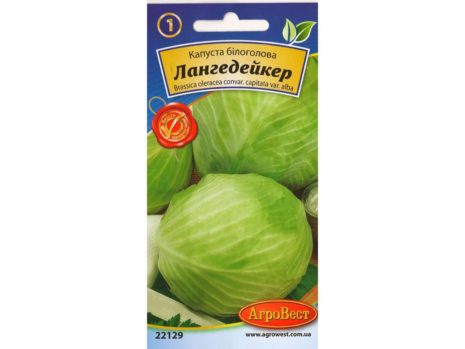
Advice. If you get a bad, tough crop, use it for processing: ferment or stew.
The Krautkaiser f1 hybrid variety, like most hybrids, is not afraid of diseases. Thanks to this, it is possible not to treat it with special compositions, it is enough to use herbicides. This species has an almost perfect round shape and a high head density. The fruits are mainly used for processing.Sauerkraut is often made from them. This variety is recommended to be stewed or added to soup.
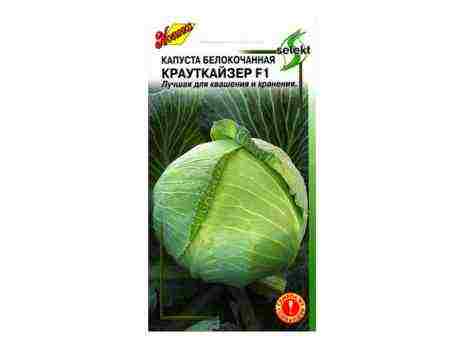
Another hybrid deserves special attention - Bronco cabbage f1. It is suitable for growing in the most difficult conditions (cold, drought, temperature extremes). Bronco cabbage - white cabbage, gives a yield of 3-4 kg from one seedling. Seeds of the middle price category.
Late varieties
Late varieties are usually combined with early varieties so that the farm can sell crops throughout the summer and fall. Late-ripening species are good for the northern regions of central Russia, grow well in greenhouses.
The most popular types:
- Bartolo;
- Portula;
- cabbage Jubilee f1;
- Ammon.
"Bartolo" has two forms: hybrid and original. Farmers prefer the hybrid because it is disease resistant. Heads of cabbage have an oval, slightly elongated shape, are distinguished by a light shade (light green, turning into white). They are stored for a long time on counters, and even longer in warehouses with special storage conditions. The variety is notable for its high weight, on average 3 kg.
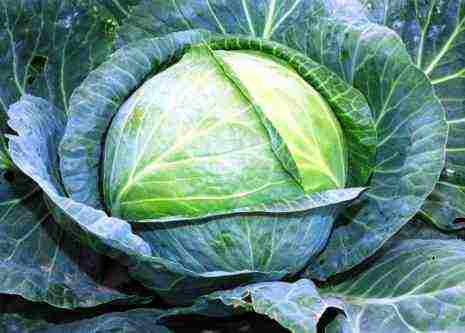
Interesting. The more the head of cabbage weighs, the more juicy the leaves turn out to be.
"Jubilee" grows up to 120 days, has a gray-green foliage tint. Leaves are medium, dense, but not hard. Weight up to 6 kg.
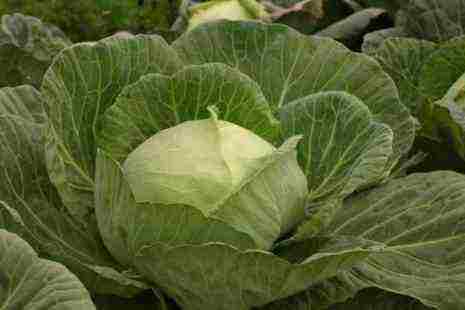
Portula is another hybrid. Its main advantage over other species is that fruits reach 6 kg by weight. There are no clear recommendations on the use of the leaves of this cabbage, it is considered universal. Used for salads, pickling, stewing and cooking.
Cabbage "Ammon f1" is used to create dietary and medicinal products due to its low calorie content and high content of ascorbic acid, which is necessary to nourish the body and support immunity. This variety produces a good harvest. The heads of cabbage are medium in size, but the crop can be planted tightly and a large number of fruits can be obtained from a limited area.
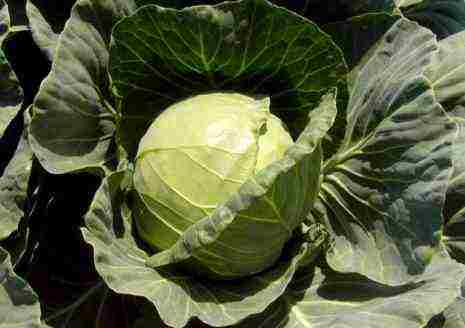
Cabbage "Adapter" f1 - the latest, with a growing season of up to 120 days. Yields heads of cabbage up to 4 kg in weight. Along with it, cabbage "Ankoma" f1 matures late, 130 days later. It is intended for storage or fresh consumption.
In the north, Krautman cabbage grows well. It is not intended for the Lower Volga region and similar areas, because it does not tolerate drought and heat. Ripening period - 120 days. Cabbage "Krautman" - variety description:
- white cabbage;
- large (up to 7 kg, on average about 4);
- high yield, about 9 kg per square meter.
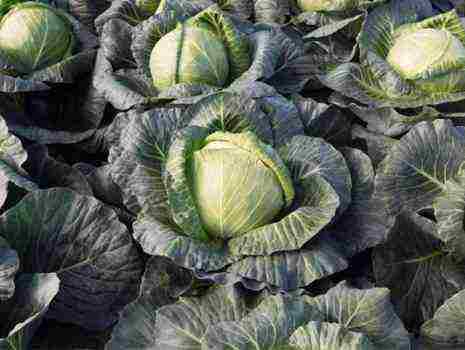
Stably yields regardless of growing conditions Larsia cabbage f1. She is glossy, dark in color. Fruit size is average, ripening period is about 115 days.
Features of care and cultivation of crops
Dutch cabbage is unpretentious. The main measures of crop care:
- loosening the earth;
- the use of a growth stimulator during transplantation;
- providing additional lighting;
- infrequent watering;
- feeding once a month;
- the use of herbicides at the beginning of the vegetative cycle.
Note. Some formulations can be toxic to humans. They need to be carefully selected.
Gardeners will hardly feel the cost of additional fertilizers, but large entrepreneurs will notice that even such a simple care will cost a lot. But the yield of the crop increases sharply due to regular care.
You do not need to use additional protective compounds and fertilizers, but then the yield will decrease by 1.5-2 or even 3 times.
Hybrid crops do not need to be treated with protective compounds: they are not afraid of diseases. However, they still need to be protected from pests and weeds, like the original varieties. The best option is to use herbicides and insecticides immediately after planting seedlings in the ground or after 1-2 weeks.
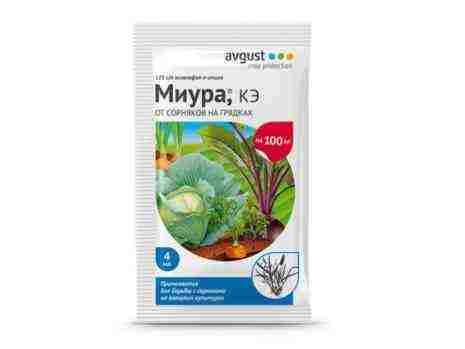
Advantages and disadvantages of cabbage
Dutch cabbage varieties are not in vain the most popular: their high demand provides many positive aspects of varieties. Cabbage benefits:
- gives a large harvest, up to 10-11 kg per square meter;
- one head of cabbage can reach 7 kg;
- widely used in cooking: fruits can be stewed, boiled, pickled, consumed fresh;
- unpretentious culture;
- most varieties are adapted for Russian conditions, even for the harsh weather of the north;
- the crop is drought tolerant and produces a decent harvest even in cold summers.
Flaws:
- additional treatment with herbicides and insecticides is required;
- with insufficient care, the yield drops sharply;
- some varieties do not store well and may crack.
Advice. When buying, pay attention to the characteristics of a particular variety. They vary greatly depending on the type of cabbage.
Customer Reviews
Vasily F., private farmer: “I bought the“ Mirror ”variety. You can pick the fruits very early, but they do not lie on the field for long, they may crack a little. They grow well, do not require constant care. Heads of cabbage are pleasant to look at, they are quickly bought. I am ready to buy this variety further, although the need to buy seeds again every year is not encouraging. "
Antonina S., gardener: “I grow various hybrids of Dutch cabbage, 2-3 heads of cabbage. You can harvest from June to October, so my table is always provided with fresh cabbage leaves. Despite the fact that the varieties are all different, they differ in almost the same taste: juicy and not bitter. I just add a little fertilizer, while the fruits are large and tasty. "
Sergey K., entrepreneur: “Krautman and some other northern varieties are grown on my subsidiary farm. They grow well in the open field in the Urals, they only require herbicide treatment. Caring for them is inexpensive and very simple, according to workers' reviews. Heads of cabbage willingly buy shops and even restaurants ”.
Good afternoon friends!
Your backfill question: "What is called the third bread"? Possesses high nutritional qualities, is indispensable in nutrition. It can be eaten salted and pickled, or left for storage. It arouses an increased interest of gardeners, it happens with a white and red head, colored, Savoy, Brussels, Peking, broccoli, kohlrabi ...
As you may have guessed it is cabbage. Today I am writing only about the best varieties that can be planted this year.
Dear gardeners, you can also drop in and choose the best low-growing tomatoes without pinching and onion sets for planting in open ground.
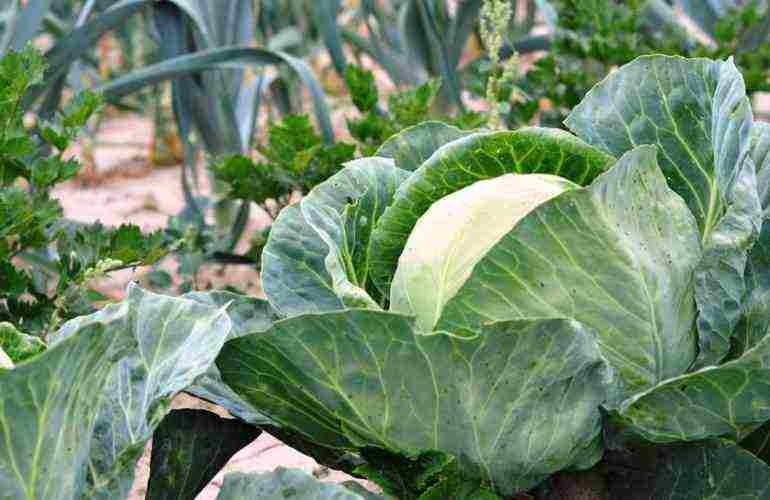
Popular varieties and hybrids of cabbage for 2018
A large number of new varieties and hybrids of cabbage, allow you to choose the best ones. But there are always the most reliable and popular ones, loved for 100% seed germination, strong seedlings, disease resistance and a high yield. Meet and feel free to plant seeds and seedlings in 2018.
SLAVA AGGRESSOR F1
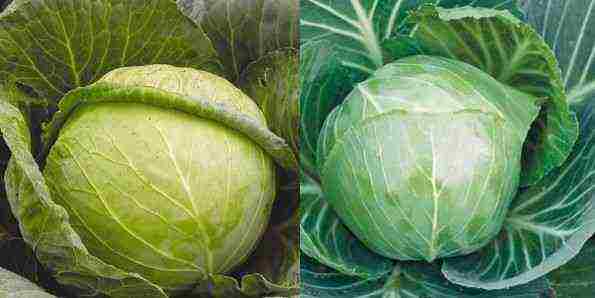
DIDON F1 EXTRA F1

The most popular varieties and hybrids:
- early ripening - Transfer, Dumas, Malachite, Zarya, Kazachok, June;
- mid-season - Menza, Gift, S-217 Jubilee, Midor, Slava-1305, Dobrovolskaya;
- late ripening - Crumont, Geneva, Aros, Tyukiz, Amager;
Dutch cabbage varieties
The Dutch company Enza Zaden, is the world's largest producer of various vegetable crops, which has more than 800 varieties and hybrids.
Therefore, when choosing, you should decide on the purpose of the harvest, taste, ripening time and choose varieties suitable for your climate. The best varieties of Dutch cabbage:
- early: Hermes, Bingo, Gloria, Kilagret, Parel, Musketeer, Pandion, Kinzor
- mid-season: Donar, Green Boy, Krautkayser, Larsia, Rinda
- mid-late: Atria, Galaxy, Bartolo, Kilaton, Kolya, Roxy, Colorama, Amtrak, Novator Arrivist
Any variety or hybrid of your choice will give you a full-bodied and solid harvest.
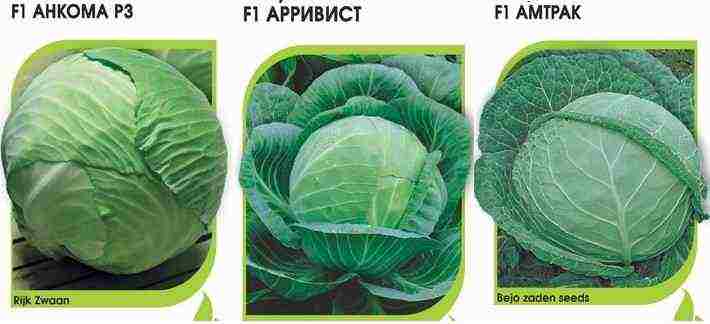
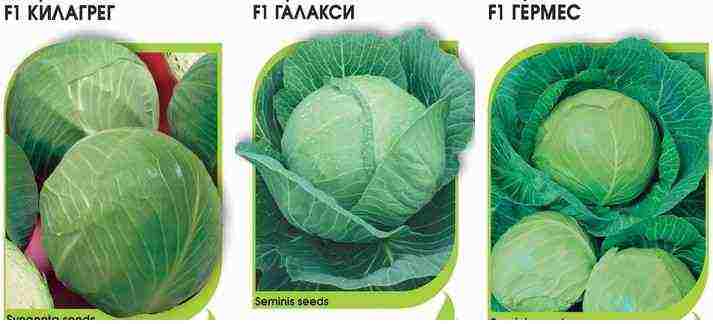
The best varieties of early and late cabbage for central Russia
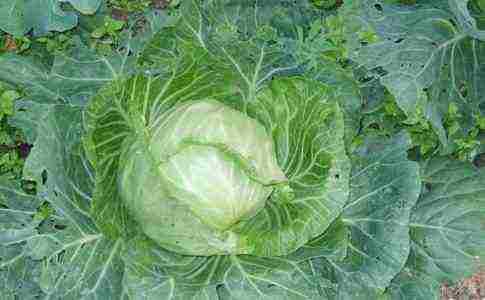
Ultra-early ripening varieties are characterized by excellent taste, a short ripening period (from 45 - 55 - 67 days), a small size of heads (0.8 - 1, 5 - 2.5 kg), and a yield (up to 5 kg / sq. M). Heads of cabbage are resistant to cracking.
Cabbage is intended for fresh consumption.
Early and mid-early varieties and hybrids of cabbage: Aigul, Atlantis, Hermes, Zenith, Pandion, Parel (the most popular), Rayma, Early sleep, Svirel, Tiara, Agenor, Aquarelle, Didon, Leopold, New Rinda, Ramada, Selma, Cyclops ( new), Champion, Kandisa, Krautman, Alyonushka
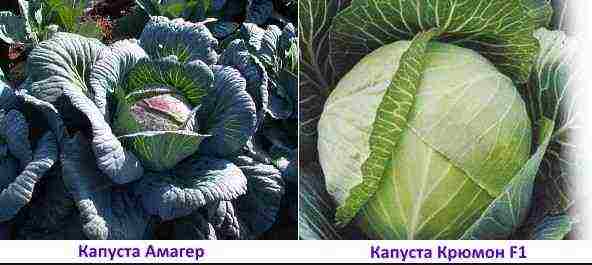
Late varieties are characterized by a longer growing season (95 - 120 - 140 days), medium and large heads of cabbage (2, 5 - 5.0 - 9 kg) of high density. Recommended for fermentation and short storage.
Mid-late-ripening varieties and hybrids of cabbage: Amager, Crumont, Aggressor, Atria, Vestri, Megaton, Menzania (new), Kolya, Typhoon, Terrace, Tobia, Kolobok, Leppox, Amager, Ammont, Larsia, Amtrak
White cabbage varieties for pickling and pickling
Only mid-season and late cabbage is suitable for pickling and pickling.
TOP-6 best varieties for pickling and pickling:

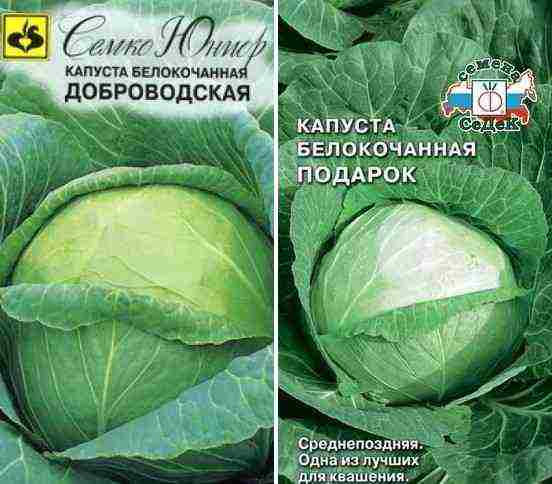
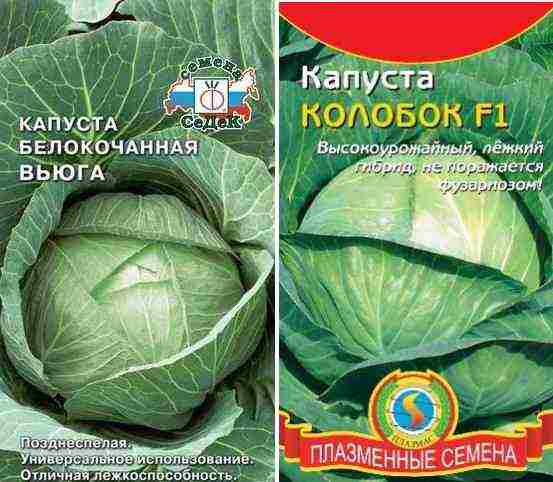
PRESENT - one of the best representatives of cabbage for pickling, can be grown in all regions of Russia.
MENZA - a large-headed hybrid (up to 8 kg), has a small stump.
ANNIVERSARY S-217 — medium-headed, weighing up to 5 kg, very dense, with good taste. Breeders dedicated this variety to the 850th anniversary of Moscow.
DOBROVODSKAYA - universal cabbage. Value:
- high resistance to various diseases and pests, does not require spraying
- good keeping quality (up to 6 months) when stored in a dry, cool cellar
- resistant to light frost
WINTER STORM - prized for its high yield. Heads of cabbage are dense, medium in size and weight (up to 5 kg).
KOLOBOK - lover of fertile land and moisture, while the heads of cabbage do not crack. In addition to fermentation, it is well stored (up to 8 months). Disease resistant.
The best varieties of cabbage for winter storage
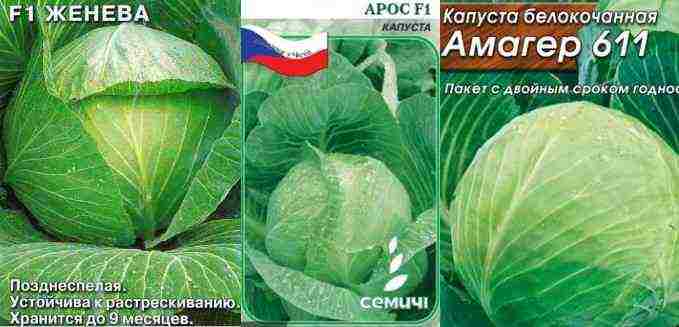
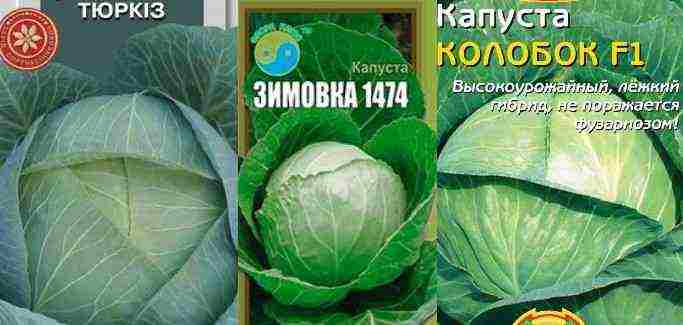
GENEVA — late ripening hybrid, ripening period up to 140 days. Value: stored until new harvest, resistance to vascular bacteriosis, high transportability
AROS F1 - stored for 7-8 months. Positive quality - resistance to almost all existing diseases affecting cabbage and head cracking. Weighs within 1.9 kg.
AMAGER — heads of cabbage are dense, round-flat (up to 3.5 kg). During storage, the taste only improves.
TURKIZ - used for fermentation and long-term storage (up to 8 months). Resistant to fusarium, high and low temperatures.
WINTER 1474 - grade frost-resistant, selected for cultivation in northern climates. Heads of cabbage are small (up to 3 kg).
KOLOBOK - hybrid, shelf life up to 6 months, leaves are juicy and tender, lack of bitterness puts it in first place in terms of taste.
In the article, I presented more than 70 best and new varieties and hybrids of white cabbage. Surely you have your own proven varieties, share them in the comments. This will serve as a topic for discussion.
Author of the publication
0 Comments: 533Publications: 255Registration: 04-09-2015
